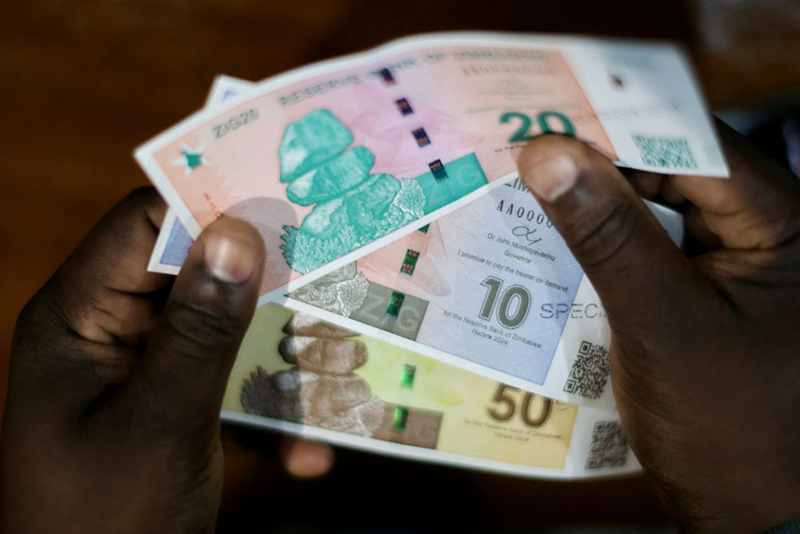- Opinion
- No Comment
Why Zimbabwe’s ZiG currency is more glitter than gold

Zimbabwe has a painful relationship with money. At the height of hyperinflation in 2008, the African economy’s billion- and trillion-dollar banknotes could barely buy toilet paper as war, autocracy and monetary recklessness crushed confidence and ruined lives, said Lionel Laurent, a Bloomberg Opinion columnist.
Fresh economic woes mean memories of that time are starting to flood back: Inflation is at 55%, the US dollar has become dominant and buying a loaf of bread requires counting out 100 bills.
Hence why Zimbabwe has its sights on a new start with the ZiG, which is short for Zimbabwe Gold and is backed by some $185 million worth of gold and other reserves, as Bloomberg reported.
This is the sixth attempt at trying to overhaul a currency whose latest iteration resumed circulation in 2019 at 2.5 per US dollar and ended it last Friday at 30,671, having lost some 80% of its value since the start of this year.
After dabbling in literal gold coins and centrally issued digital variants, Zimbabwe’s central bank is saying the ZiG is a chance for a “solid and stable” national currency.
However, extreme caution is recommended with this kind of project, said Lionel Laurent.
Start with the principle: The appeal of backing a currency’s exchange rate with gold, in this case 13.56 ZiGs to the US dollar, is rooted in the nostalgic, if not mythical, view of the gold standard of the 19th and 20th centuries as a mechanism that kept money “sound” and inflation low.
But even if goldbugs note with pride that the yellow metal has fulfilled its stable-store-of-value claims over the decades, with its current record reflecting a wave of enthusiasm in a more uncertain world, in the short-term, its price can be painfully volatile.
In his book The Truth About Inflation, UBS economist Paul Donovan gives the example of a staple purchase like a gallon of milk: Between 1996 and 2004, which is a long period for the average household, its price in US dollars was more stable than its price in gold dollars (assuming a standard price of $35 per troy ounce).
In September 2022, Donovan calculates milk prices in US dollars were rising 16%, but in gold terms were rising over 23%.
The idea that gold would be more appealing than greenbacks as money doesn’t necessarily hold when it comes to price stability, which matters for Zimbabwe, as it wants ZiG to dent the US dollar’s appeal in its local economy.
Some 80% of all transactions are conducted in USD.
Then there are more practical obstacles: Maintaining a gold-backed currency like ZiG will be far from straightforward.
Yvonne Mhango of Bloomberg Economics says that Zimbabwe’s gold reserves might not be plentiful enough to maintain the desired exchange rate.
The fact that the country is going it alone, without a similar move from its trade partners, means that the new currency will be exposed to the volatility of the gold price. History shows the gold standard, in its classical pre-World War I form, required cooperation and commitment between world powers to defend gold parity. That’s not going to happen here.
There is undoubtedly a dire need for change in Zimbabwe. Bloomberg’s Next Africa newsletter declared the local currency effectively “dead” in January.
Maybe the ZiG will somehow do better than its predecessors, said Lionel Laurent.
But if the country has veered from hyperinflation to hyper-dollarization in a relatively short amount of time, and is currently battling double-digit inflation and interest rates, it’s because there are deep-seated issues beyond the money supply such as economic governance or corruption risks.
Without deeper reform, one of the country’s top exports will remain its own people, and maybe the odd trillion-dollar banknote as a souvenir.
